2017-11-02 - Nº 131
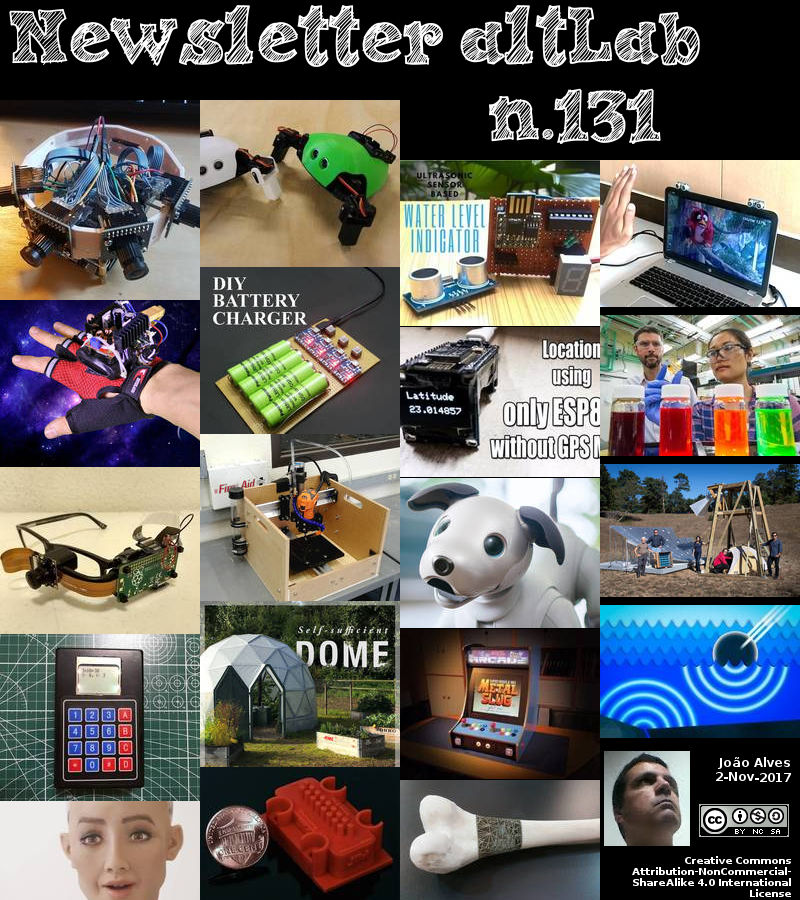
Editorial
Esta é a Newsletter Nº 131 que se apresenta com o mesmo formato que as anteriores. Se gostar da Newsletter partilhe-a!
Todas as Newsletters encontram-se indexadas no link.
Esta Newsletter tem os seguintes tópicos:
Faz hoje anos que nascia, em 1815, George Boole. Este matemático inglês ajudou a estabelecer a lógica simbólica moderna e uma álgebra de lógica, agora designada de álgebra booleana. Ao substituir operações lógicas por símbolos, Boole mostrou que as operações poderiam ser manipuladas para obter resultados logicamente consistentes. A álgebra lógica de Boole é essencialmente uma álgebra de classes, baseando-se em conceitos como complemento e união de classes. O estudo da lógica matemática ou simbólica desenvolveu-se principalmente a partir de suas ideias e a base para o desenho de circuitos de computadores digitais. As álgebras booleanas também encontram aplicações importantes em campos tão diversos como topologia, teoria das medidas, probabilidade e estatística. Boole também escreveu importantes trabalhos sobre equações diferenciais e outros ramos da matemática.
Faz também hoje anos que nascia, em 1894, Alexander Lippisch. Este desenhador aerodinâmico germano-americano cujos projectos de aeronaves com asas em formato delta nas décadas de 1920 e 1930 foram importantes no desenvolvimento de aviões de jacto e foguete de alta velocidade. Lippisch baseou sua aeronave na forma de uma flecha neste exemplo da natureza - uma semente voadora de uma planta tropical enviada a ele por um amigo. Ele verificou que a asa perto do corpo deveria ser mais espessa para que pudesse ser utilizada para armazenamento adicional, tornando possível a asa próxima ao corpo mais longa. Foi assim que ele chegou à asa em forma de delta.
Faz igualmente anos hoje que nascia, em 1929, Richard E. Taylor. Este físico canadiano foi pioneiro nas investigações sobre dispersão inelástica profunda de electrões em protões e neutrões ligados, que têm sido de importância essencial para o desenvolvimento do modelo quark em física de partículas. A equipa constituída por ele, Jerome Friedman e Henry Kendall realizou uma série de experiências que confirmaram a hipótese de que os protões e os neutrões são compostos de quarks. Esta descoberta foi crucial para a formulação da descrição teórica actualmente aceita da matéria e suas interacções, conhecida como modelo padrão. Em 1990 a equipa ganhou o prémio Nobel da Física pelos seus trabalhos.
Por fim, faz anos hoje que nascia, em 1932, Melvin Schwartz. Este físico norte-americano ficou conhecido pelas suas pesquisas sobre neutrinos (partículas subatómicas que não possuem carga eléctrica e praticamente nenhuma massa). Usando um feixe de neutrinos, a equipa descobriu um novo tipo de neutrino chamado múon e novas informações sobre a estrutura das partículas chamadas leptões. Neutrinos são produzidos quando os núcleos atómicos instáveis ou partículas subatómicas se desintegram. Schwartz e a sua equipa queriam estudar a força nuclear "fraca" que cria certos tipos de radioactividade. A equipa usou um acelerador de partículas para criar um feixe de neutrinos de alta intensidade. Estudaram as reacções produzidas quando esse feixe atingiu outras matérias. Foi-lhe atribuído em 1988 o prémio Nobel da Física conjuntamente com Leon M. Lederman e Jack Steinberger.
Nesta semana que passou ficámos a saber que a Arábia Saudita atribuiu a cidadania a um robô. Foi a primeira vez que tal aconteceu. O robô, conhecido como Sophia, apareceu no palco sem um abaya, uma cobertura de cabeça e uma capa que normalmente exigida às mulheres pelo governo saudita. "Estou muito honrada e orgulhosa por esta distinção única", disse o robô no palco. "Este é histórico para ser o primeiro robô do mundo a ser reconhecido com uma cidadania".
Também esta semana, o telescópio espacial NuSTAR da NASA e uma câmara rápida chamada ULTRACAM no Observatório William Herschel em La Palma, na Espanha, foram usados por cientistas para conseguir medir a distância que as partículas dos jactos viajam antes de se "ligarem" e tornarem-se fontes brilhantes de luz. Os buracos negros são famosos por serem comedores vorazes, mas eles não comem tudo o que cai na sua direcção. Uma pequena porção de material é recuperada em potentes jactos de gás quente, chamados de plasma, que podem causar estragos à sua volta. Ao longo do caminho, este plasma de alguma forma fica energizado o suficiente para irradiar fortemente a luz, formando duas colunas brilhantes ao longo do eixo de rotação do buraco negro.
Foi publicado um estudo esta semana que afirma que poderá haver mais planetas habitáveis do que pensávamos. Uma análise dos dados do telescópio espacial Kepler revelou 20 mundos promissores que podem ser capazes de hospedar vida. A lista de mundos potenciais inclui vários planetas que orbitam estrelas com características idênticas ao nosso Sol. Alguns tomam um tempo relativamente longo para completar uma única órbita, com o maior a demorar 395 dias da Terra e outros a demorarem semanas ou meses da Terra. A órbita mais rápida é 18 dias terrestres. Isto é muito diferente dos "anos" muito curtos que vemos em torno de estrelas menores com planetas habitáveis como Proxima Centauri.
Na Newsletter desta semana apresentamos diversos projetos de maker assim como um modelo 3D que poderá ser útil. É apresentada também a revista newelectronics de 24 de Outubro de 2017.
 João Alves ([email protected])
João Alves ([email protected])
O conteúdo da Newsletter encontra-se sob a licença  Creative Commons Attribution-NonCommercial-ShareAlike 4.0 International License.
Creative Commons Attribution-NonCommercial-ShareAlike 4.0 International License.
Novidades da Semana
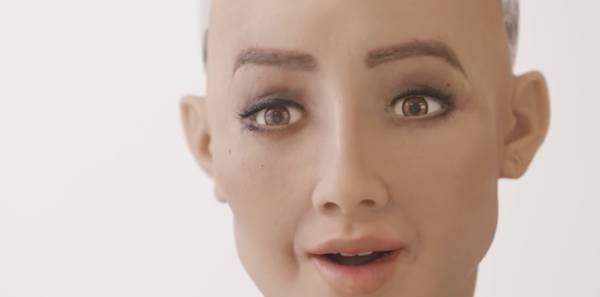
Saudi Arabia bestows citizenship on a robot named Sophia
"Saudi Arabia just made a non-human woman a citizen, making it the first country to grant a robot the right to citizenship, at least as far as we know. Why it did so isn’t immediately evident, but the irony of a nation infamous for denying basic rights to its female citizens imbuing a robotic Audrey Hepburn lookalike with rights is not lost on us. The robot, known as Sophia, appeared onstage without an abaya, a head covering and cloak normally required of women by the Saudi government. “I am very honored and proud for this unique distinction,” the robot said onstage. “This is historical to be the first robot in the world to be recognized with a citizenship.” The revelation/PR stunt came out of the Future Investment Initiative summit being held in Riyadh. Hanson Robotics, the company that developed the robot, hails it as “the most beautiful and celebrated robot,” a claim to fame that surely ensures our non-human counterparts will be just as sexually objectified as their blood and flesh foremothers." [...]

NuSTAR Probes Black Hole Jet Mystery
" Black holes are famous for being ravenous eaters, but they do not eat everything that falls toward them. A small portion of material gets shot back out in powerful jets of hot gas, called plasma, that can wreak havoc on their surroundings. Along the way, this plasma somehow gets energized enough to strongly radiate light, forming two bright columns along the black hole's axis of rotation. Scientists have long debated where and how this happens in the jet. Astronomers have new clues to this mystery. Using NASA's NuSTAR space telescope and a fast camera called ULTRACAM on the William Herschel Observatory in La Palma, Spain, scientists have been able to measure the distance that particles in jets travel before they "turn on" and become bright sources of light." [...]

We may have found 20 habitable worlds hiding in plain sight
"There could be more habitable planets out there than we thought. An analysis of data from the Kepler space telescope has revealed 20 promising worlds that might be able to host life. The list of potential worlds includes several planets that orbit stars like our sun. Some take a relatively long time to complete a single orbit, with the longest taking 395 Earth days and others taking Earth weeks or months. The fastest orbit is 18 Earth days. This is very different to the very short “years” we see around smaller stars with habitable planets like Proxima Centauri." [...]
Outras Notícias
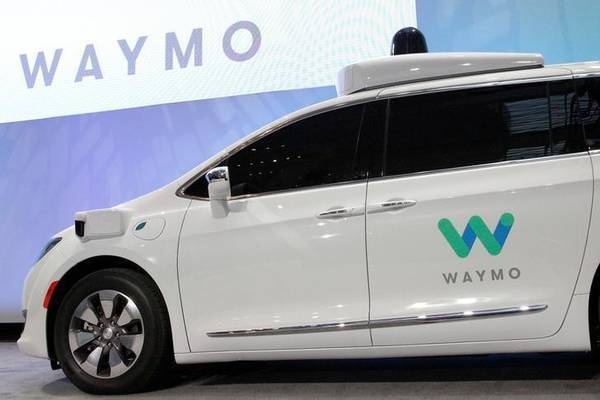
Alphabet looks to snowy Michigan to test self-driving cars
"Alphabet Inc’s (GOOGL.O) self-driving car unit Waymo is expanding winter testing as it works to address a potential blind spot for autonomous vehicles: snowy and icy conditions. Waymo said Thursday that Michigan is the sixth state where the self-driving car project will test autonomous vehicles. The company chose the state to see how vehicles will respond in snow, sleet, and ice. Waymo has been testing vehicles in Texas, Arizona, Washington State, Nevada and California and starts in Michigan next week on public roads with a backup safety driver sitting in the driver seat if necessary. “For human drivers, the mix of winter conditions affects how well you can see and the way your vehicle handles the road. The same is true for self-driving cars,” said Waymo chief executive John Krafcik in a blog post." [...]

SpaceX Aces Another Rocket Landing After Launching Korean Satellite
"The rocket landing was the 19th that SpaceX has pulled off during orbital launches. These dramatic events are part of the company's plan to develop completely reusable rockets and space vehicles, a breakthrough that SpaceX founder and CEO Elon Musk has said will slash the cost of spaceflight. To date, SpaceX has re-flown three of these landed Falcon 9 first stages, as well as one Dragon cargo capsule. In addition, the company's next resupply mission to the International Space Station for NASA will feature a pre-flown Dragon. (The Falcon 9 that launched today was a brand-new vehicle.) South Korean company KT Sat will use the 8,160-lb." [...]

Next Mars Rover Will Have 23 'Eyes'
"When NASA's Mars Pathfinder touched down in 1997, it had five cameras: two on a mast that popped up from the lander, and three on NASA's first rover, Sojourner. Since then, camera technology has taken a quantum leap. Photo sensors that were improved by the space program have become commercially ubiquitous. Cameras have shrunk in size, increased in quality and are now carried in every cellphone and laptop. That same evolution has returned to space. NASA's Mars 2020 mission will have more "eyes" than any rover before it: a grand total of 23, to create sweeping panoramas, reveal obstacles, study the atmosphere, and assist science instruments." [...]

Sony’s Aibo robot dog is back, gives us OLED puppy dog eyes
"Weird Sony is back, and it recently announced a new version of the Sony Aibo, everyone's favorite robotic toy dog! Sony has been out of the plastic pooch business for about 11 years, and the 2017 version is well-equipped for the smartphone era with LTE and an app. Sadly, like seemingly every Aibo ever, the pup is only for sale in Sony's hometown of Japan, but we can still love it from afar. The Aibo tries to replicate a real dog and doesn't do much else. The new version has 22 axes of motion. The legs let it walk, shake hands, sit, play with a ball, scratch a digital itch, and do "hundreds" of other dog things." [...]
Ciência e Tecnologia

Let your car tell you what it needs
"MIT team develops software that can tell if tires need air, spark plugs are bad, or air filter needs replacing. Imagine hopping into a ride-share car, glancing at your smartphone, and telling the driver that the car’s left front tire needs air, its air filter should be replaced next week, and its engine needs two new spark plugs. Within the next year or two, people may be able to get that kind of diagnostic information in just a few minutes, in their own cars or any car they happen to be in. They wouldn’t need to know anything about the car’s history or to connect to it in any way; the information would be derived from analyzing the car’s sounds and vibrations, as measured by the phone’s microphone and accelerometers. The MIT research behind this idea has been reported in a series of papers, most recently in the November issue of the journal Engineering Applications of Artificial Intelligence. The new paper’s co-authors include research scientist Joshua Siegel PhD ’16; Sanjay Sarma, the Fred Fort Flowers and Daniel Fort Flowers Professor of Mechanical Engineering and vice president of open learning at MIT; and two others." [...]
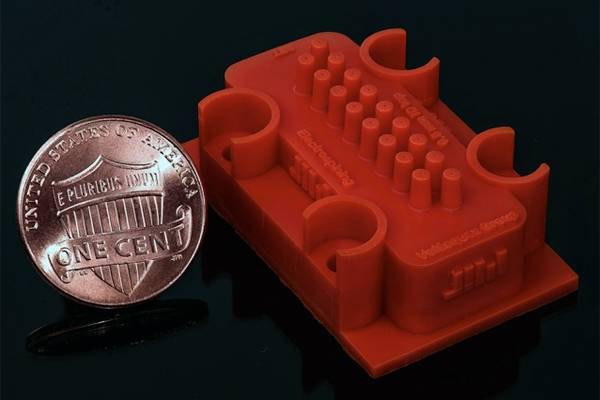
3-D-printed device builds better nanofibers
"Meshes made from fibers with nanometer-scale diameters have a wide range of potential applications, including tissue engineering, water filtration, solar cells, and even body armor. But their commercialization has been hampered by inefficient manufacturing techniques. In the latest issue of the journal Nanotechnology, MIT researchers describe a new device for producing nanofiber meshes, which matches the production rate and power efficiency of its best-performing predecessor — but significantly reduces variation in the fibers’ diameters, an important consideration in most applications. But whereas the predecessor device, from the same MIT group, was etched into silicon through a complex process that required an airlocked “clean room,” the new device was built using a $3,500 commercial 3-D printer. The work thus points toward nanofiber manufacture that is not only more reliable but also much cheaper. The new device consists of an array of small nozzles through which a fluid containing particles of a polymer are pumped." [...]
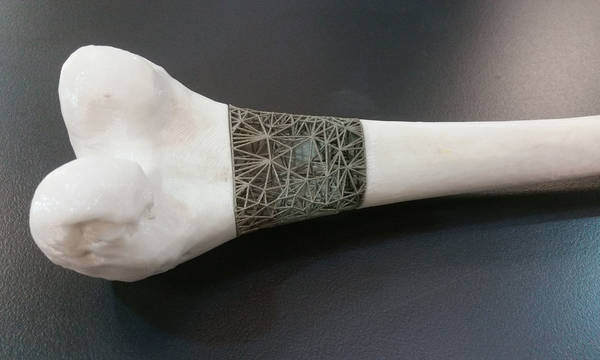
Just-in-time 3D implants set to transform tumour surgery
"A major new Australian research project using 3D implants and robotic surgery is set to radically advance the way physicians surgically treat tumours and bone cancer. The five-year project, “Just in time implants”, brings together the Australian Government, RMIT University in Melbourne, the University of Technology Sydney (UTS), St Vincent’s Hospital Melbourne and global medical technology company Stryker. Worth more than $12.1 million in research effort, the work is partially funded by Stryker with co-funding from the Innovative Manufacturing Cooperative Research Centre (IMCRC), which is contributing $2.36 million in cash. Lead researcher, RMIT’s Professor Milan Brandt, and the project team will combine 3D printing, robotic surgery and advanced manufacturing to create tailored implants for patients with bone cancer. “Our aim is to bring the technology to the theatre,” Brandt said. “While patients are having their cancer removed in the operating theatre, in the next room, we are custom printing an implant to precisely fill the space left after removal of the diseased bone.” St Vincent’s Hospital’s Professor Peter Choong said just-in-time implants will transform the delivery of care for people with bone cancer." [...]
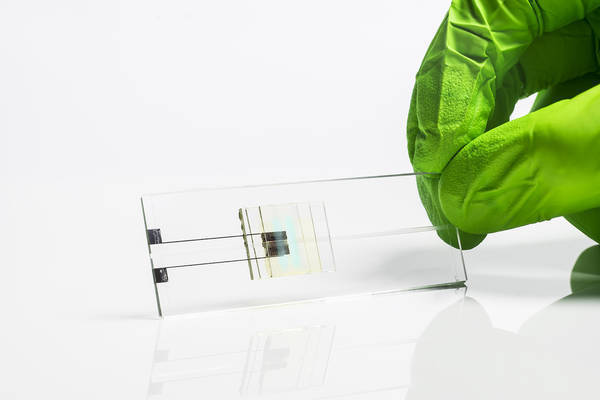
Making fluorescent chips using an inkjet printer
"Want to quickly test blood for pathogens? Or food for toxins? In the future, you will be able to do just that from the comfort of your own home using a small fluorescent chip and your smartphone. To make use of this method, you require a lamp and a detector – and now these could potentially be printed in large quantities using an inkjet printer. Fraunhofer IOF researchers will be showcasing the technique at the Compamed trade fair (Hall 8a, Booth P13), to be held in Düsseldorf from November 13-16. Every mealtime it’s the same thing." [...]

Ocean sound waves may reveal location of incoming objects
"The ocean can seem like an acoustically disorienting place, with muffled sounds from near and far blending together in a murky sea of noise. Now an MIT mathematician has found a way to cut through this aquatic cacaphony, to identify underwater sound waves generated by objects impacting the ocean’s surface, such as debris from meteorites or aircraft. The results are published this week in the online journal Scientific Reports. Lead author Usama Kadri, a research affiliate in MIT’s Department of Mathematics, is applying the team’s acoustic analysis in hopes of locating Malaysia Airlines flight 370, an international passenger plane that disappeared over the southern Indian Ocean on March 8, 2014. Since the aircraft’s disappearance, authorities have confirmed and recovered a few of the plane’s parts. However, the bulk of the aircraft has yet to be identified, as has any reasonable explanation for its demise." [...]

Devices made from 2D materials separate salts in seawater
"Researchers at the National Graphene Institute (NGI) at The University of Manchester have succeeded in fabricating tiny slits in a new membrane that are just several angstroms (0.1nm) in size. This has allowed the study of how various ions pass through these tiny holes. The slits are made from graphene, hexagonal boron nitride (hBN) and molybdenum disulphide (MoS2) and, surprisingly, allow ions with diameters larger than the size of the slit to permeate through. The size-exclusion studies allow for a better understanding of how similar scale biological filters such as aquaporins work and so will help in the development of high-flux filters for water desalination and related technologies. For scientists interested in the behaviour of fluids and their filtration, it has been an ultimate but seemingly distant goal to controllably fabricate capillaries with dimensions approaching the size of small ions and individual water molecules. Researchers have been trying to mimic naturally-occurring ion transport systems, but this has proved to be no easy task." [...]

Crowdsourcing big-data analysis
"In the analysis of big data sets, the first step is usually the identification of “features” — data points with particular predictive power or analytic utility. Choosing features usually requires some human intuition. For instance, a sales database might contain revenues and date ranges, but it might take a human to recognize that average revenues — revenues divided by the sizes of the ranges — is the really useful metric. MIT researchers have developed a new collaboration tool, dubbed FeatureHub, intended to make feature identification more efficient and effective. With FeatureHub, data scientists and experts on particular topics could log on to a central site and spend an hour or two reviewing a problem and proposing features. Software then tests myriad combinations of features against target data, to determine which are most useful for a given predictive task." [...]
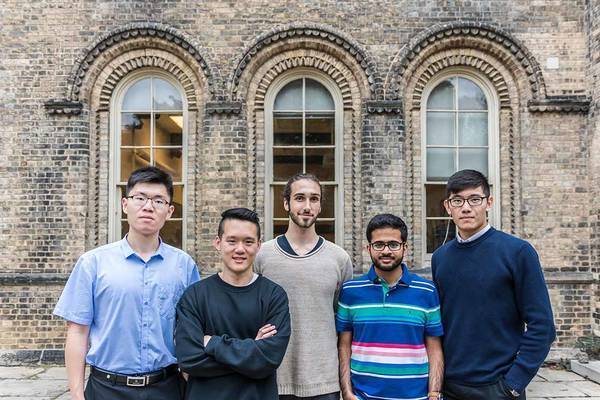
Cracking the code: This group of U of T computer science researchers are decoding ciphers with AI
"To break the Enigma code during the Second World War, British computer scientist Alan Turing developed a mathematical model to unlock the cipher faster than any human. Today, a group of University of Toronto undergraduate computer science students are decoding encrypted text using a neural network, a framework for machine learning algorithms inspired by the brain. “We're at a stage [in our research] where we can pretty confidently say that the architecture works, and it's more general than anything that's been previously developed,” says Aidan Gomez, a fourth-year student in the department of computer science. Their accuracy results are above 95 per cent, he adds. Gomez and the FOR.ai research team Sheldon Huang, Bryan Li, Muhammad Osama and Ivan Zhang, are 2018 fellows of AI Grant, a recently established non-profit that provides select projects nearly $50,000 in cloud computing resources from Google, among others. They also receive exclusive access to a global AI network of mentors including Andrej Karpathy, a U of T alumnus who was formerly of OpenAI and now director of AI at Tesla." [...]
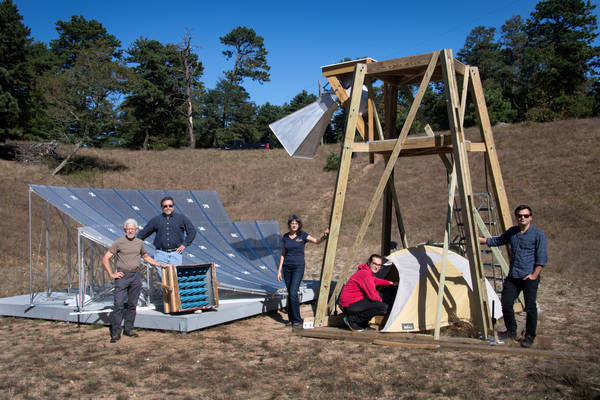
New Radio Telescope at Brookhaven Lab Sees Space in a Different Light
"A new prototype radio telescope has begun observing the universe from the U.S. Department of Energy’s (DOE) Brookhaven National Laboratory. Constructed by a team of scientists, engineers, carpenters, and students, the prototype telescope was funded through Brookhaven’s Laboratory Directed Research and Development program. Brookhaven scientists and collaborators will use the small prototype to test the merits of a radio telescope on-site at the Lab, develop new ways of attacking fundamental problems, and break into the field of 21 centimeter cosmology—the study of our universe's origins through radio signals emitted by hydrogen gas in distant galaxies. Cosmologists have primarily used optical telescopes—telescopes that observe space through visible light—to study galaxies and their distributions in space and time. These telescopes are extremely advanced, and ones like the Large Synoptic Survey Telescope (LSST) now under construction in Chile are fully optimized for cosmological applications; however, optical telescopes are also extremely expensive to build. That’s why Brookhaven is investigating radio telescopes as an alternative, cost-effective way to observe the universe." [...]
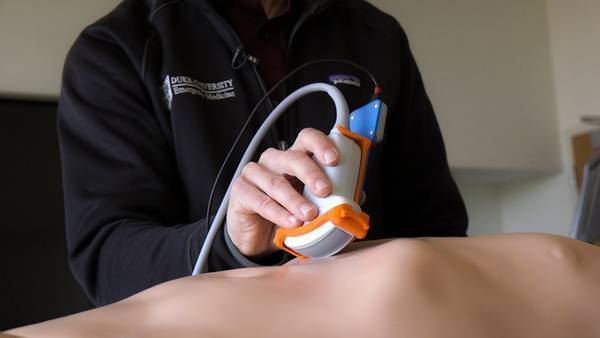
How a $10 Microchip Turns 2-D Ultrasound Machines to 3-D Imaging Devices
"Technology that keeps track of how your smartphone is oriented can now give $50,000 ultrasound machines many of the 3-D imaging abilities of their $250,000 counterparts—for the cost of a $10 microchip. In a presentation at the American College of Emergency Physicians Research Forum on October 31, doctors and engineers from Duke University and Stanford University showed how their snap-on invention can make 2-D ultrasound machines much more powerful. With a few cents’ worth of 3-D-printed materials, a microchip common to smartphones, a few wires and a laptop, a 2-D ultrasound machine can capture 3-D images of infants’ brains with similar quality to MRI or CT scans while the baby is held in a parent’s arms. “With 2-D technology you see a visual ‘slice’ of an organ, but without any context, you may mistake it for another part, or mistake one disease process or injury for another,” said Joshua Broder, M.D., emergency physician and director of the emergency medicine residency program at the Duke University School of Medicine. “These are all problems that can be solved with the added orientation and holistic context of 3-D technology. Gaining that ability at an incredibly low cost by taking existing machines and upgrading them seemed like the best solution to us.” The idea came to Broder while playing a game of Nintendo Wii with his son." [...]

Faster big-data analysis
"We live in the age of big data, but most of that data is “sparse.” Imagine, for instance, a massive table that mapped all of Amazon’s customers against all of its products, with a “1” for each product a given customer bought and a “0” otherwise. The table would be mostly zeroes. With sparse data, analytic algorithms end up doing a lot of addition and multiplication by zero, which is wasted computation. Programmers get around this by writing custom code to avoid zero entries, but that code is complex, and it generally applies only to a narrow range of problems. At the Association for Computing Machinery’s Conference on Systems, Programming, Languages and Applications: Software for Humanity (SPLASH), researchers from MIT, the French Alternative Energies and Atomic Energy Commission, and Adobe Research recently presented a new system that automatically produces code optimized for sparse data. That code offers a 100-fold speedup over existing, non-optimized software packages." [...]

Separating Chemicals With Magnets
"Researchers File Patent for Novel, Energy-Efficient Technique that Leverages Membranes and Magnets to Purify Chemical Compounds from Mixtures in Oil and Gas Processing A team of researchers at the Gas Research Center (GRC) are working to reduce the high energy costs of industrial chemical separation processes with a breakthrough separation technique that leverages membranes and magnets to purify chemical mixtures. Chemical separation is at the heart of many UAE industries – from oil refining and gas processing to chemicals manufacturing – and is responsible for a significant share of the country’s energy consumption and carbon dioxide emissions. Globally, chemical separation processes account for up to 15% of total annual energy consumption, underscoring the critical need for alternative chemical separation innovations that can replace the energy-intensive thermally-based processes most commonly used today. “The novel technique we are developing could help reduce the energy footprint of industrial chemical separation technologies, enhance productivity and global competitiveness of key UAE industries, and contribute to the country’s energy-efficiency goals,” said Dr. Georgios Karanikolos, Assistant Professor of Chemical Engineering. Dr. Karanikolos is leading a team of researchers from GRC, located in Khalifa University of Science and Technology’s Sas Al Nakhl Campus. The center was established by the Petroleum Institute, now part of Khalifa University of Science and Technology, with the support of GASCO, ADNOC, Shell Abu Dhabi B.V., Total S.A. and Partex Gas Corporation." [...]
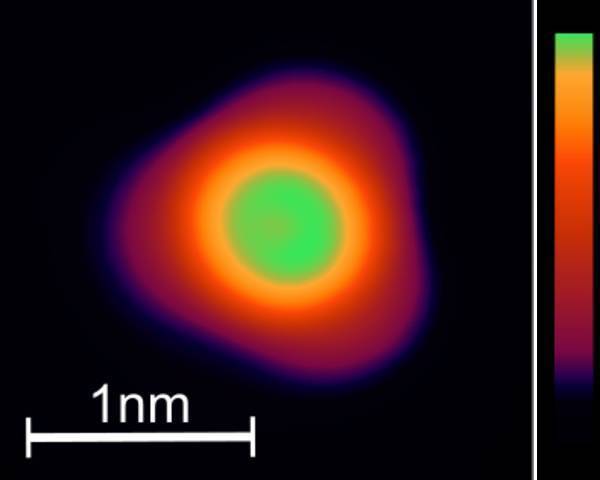
The hidden Nano Power Switch
"Kiel researchers discover switching function in molecular wire The increasing miniaturisation in electronics will result in components which consist of only a few molecules, or even just one molecule. Tiny wires are required to connect these to an electrical circuit at the nano level. An international research team from Kiel University (CAU) and the Donostia International Physics Center in San Sebastián, Spain, has developed a molecule integrating a wire with a diameter of only a single atom. The scientists discovered that the current can be regulated via this molecular wire. It works like a nano power switch, and makes the use of molecular wires in electronic components at the nano scale feasible. The research team’s findings appeared in the scientific journal Physical Review Letters." [...]
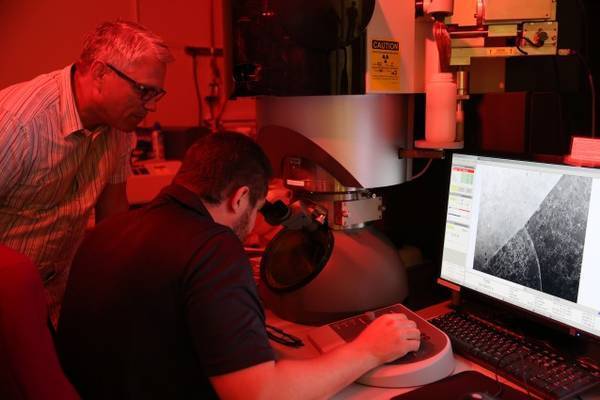
Lab researchers achieve breakthrough in 3D printed marine grade stainless steel
""Marine grade" stainless steel is valued for its performance under corrosive environments and for its high ductility -- the ability to bend without breaking under stress -- making it a preferred choice for oil pipelines, welding, kitchen utensils, chemical equipment, medical implants, engine parts and nuclear waste storage. However, conventional techniques for strengthening this class of stainless steels typically comes at the expense of ductility. Lawrence Livermore National Laboratory (LLNL) researchers, along with collaborators at Ames National Laboratory (link is external), Georgia Tech University (link is external) and Oregon State University (link is external), have achieved a breakthrough in 3D printing one of the most common forms of marine grade stainless steel -- a low-carbon type called 316L -- that promises an unparalleled combination of high-strength and high-ductility properties for the ubiquitous alloy. The research appears online Oct. 30 in the journal Nature Materials (link is external). "In order to make all the components you're trying to print useful, you need to have this material property at least the same as those made by traditional metallurgy," said LLNL materials scientist and lead author Morris Wang. "We were able to 3D print real components in the lab with 316L stainless steel, and the material's performance was actually better than those made with the traditional approach." [...]
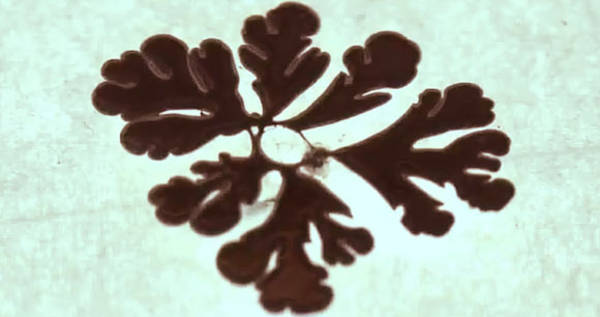
Voltage-driven Liquid Metal Fractals
"Researchers from North Carolina State University have found that gallium indium (EGaIn), a liquid metal with one of the highest surface tensions, can be induced to spread and form patterns called fractals with the application of low voltage. The work has implications for controlling the shape of liquid metals. Surface tension is the force exerted by the surface of a liquid that causes it to “bead up” or form droplets. Water, for example, has a high surface tension, so it beads up, whereas alcohol, with a lower surface tension, tends to spread out. Liquid metals, such as mercury, have enormous surface tension and thus are almost always spherical. In fact, EGaIn has the highest surface tension of any known liquid at room temperature." [...]
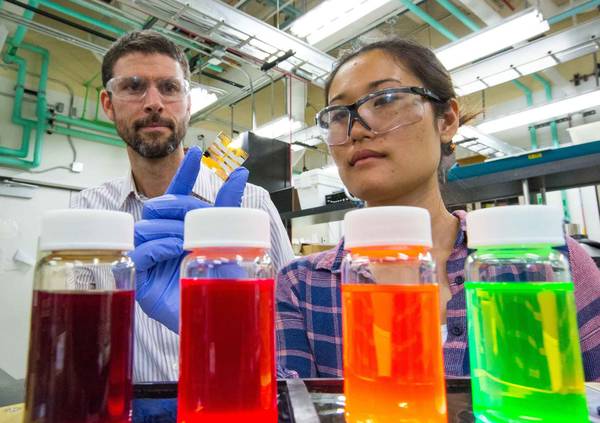
NREL, University of Washington Scientists Elevate Quantum Dot Solar Cell World Record to 13.4 Percent
"Researchers at the U.S. Department of Energy’s (DOE) National Renewable Energy Laboratory (NREL) established a new world efficiency record for quantum dot solar cells, at 13.4 percent. Colloidal quantum dots are electronic materials and because of their astonishingly small size (typically 3-20 nanometers in dimension) they possess fascinating optical properties. Quantum dot solar cells emerged in 2010 as the newest technology on an NREL chart that tracks research efforts to convert sunlight to electricity with increasing efficiency. The initial lead sulfide quantum dot solar cells had an efficiency of 2.9 percent. Since then, improvements have pushed that number into double digits for lead sulfide reaching a record of 12 percent set last year by the University of Toronto. The improvement from the initial efficiency to the previous record came from better understanding of the connectivity between individual quantum dots, better overall device structures and reducing defects in quantum dots." [...]

Fooling Neural Networks w/3D-Printed Objects
"Artificial intelligence (AI) in the form of “neural networks” are increasingly used in technologies like self-driving cars to be able to see and recognize objects. Such systems could even help with tasks like identifying explosives in airport security lines. But in many respects they're a black box, in the sense that researchers who develop them don’t know exactly how they work or how they could be fooled. Imagine, for example, if a terrorist could make small tweaks to the physical design of a bomb, in such a way that it evades the detection of a TSA device. While we’re years away from a scenario as terrifying as that, this week CSAIL researchers showed how much higher the stakes could be: in a new paper, they demonstrate the first-ever method of producing actual real-world 3D objects that can consistently fool neural networks. The team shows that they’re not only able to fool a neural network into thinking that a gun is no longer a gun - they can actually fool it into classifying a physical object as anything they want." [...]

Scientists penetrate mystery of raging black hole beams
"They are nature’s very own Death Star beams – ultra-powerful jets of energy that shoot out from the vicinity of black holes like deadly rays from the Star Wars super-weapon. Now a team of scientists led by the University of Southampton has moved a step closer to understanding these mysterious cosmic phenomena – known as relativistic jets – by measuring how quickly they ‘switch on’ and start shining brightly once they are launched. How these jets form is still a puzzle. One theory suggests that they develop within the ‘accretion disc’ – the matter sucked into the orbit of a growing black hole. Extreme gravity within the disc twists and stretches magnetic fields, squeezing hot, magnetised disc material called plasma until it erupts in the form of oppositely directed magnetic pillars along the black hole’s rotational axis. Plasma travels along these focused jets and gains tremendous speed, shooting across vast stretches of space." [...]

View the chemical reactions of nanostructures live
"What exactly happens with nanostructures during chemical reactions? Researchers at DTU Nanotech can now provide real time video of the complex nanoscale chemistry. DTU Nanotech has developed microchip based systems that enable imaging on the molecular scale of processes in liquids. Used in connection with scanning or transmission electron microscopes (SEM and TEM), it allows you to reveal the intricate details of reactions at interfaces between particles, solid surfaces and liquids, such as e.g. corrosion or crystallisation processes. Nanostructured solid-liquid interfaces are present everywhere in daily life, in products and production." [...]

Scientists take important step with self-folding objects
"Researchers at TU Delft have combined origami techniques and 3D printing to create flat structures that can fold themselves into 3D structures (for example a tulip). The structures self-fold according to a pre-planned sequence, with some parts folding sooner than others. Usually, expensive printers and special materials are needed for that. But the TU Delft scientists have created a new technique that requires only a common 3D printer and ubiquitous material. Among other applications, their research has the potential to greatly improve bone implants. In recent years, Amir Zadpoor of TU Delft has become somewhat of an origami master." [...]

High-Speed Motion Core Technology for Magnetic Memory
"A joint research team led by Professor Kab-Jin Kim of the Department of Physics, KAIST and Professor Kyung-Jin Lee at Korea University developed technology to dramatically enhance the speed of next generation domain wall-based magnetic memory. This research was published online in Nature Materials on September 25. Currently-used memory materials, D-RAM and S-RAM, are fast but volatile, leading to memory loss when the power is switched off. Flash memory is non-volatile but slow, while hard disk drives (HDD) have greater storage but are high in energy usage and weak in physical shock tolerance. To overcome the limitations of existing memory materials, ‘domain wall-based, magnetic memory’ is being researched. The core mechanism of domain wall magnetic memory is the movement of a domain wall by the current." [...]
Modelos 3D
Com a disponibilidade de ferramentas que permitem dar azo a nossa imaginação na criação de peças 3D e espaços como o thingiverse para as publicar, esta rubrica apresenta alguns modelos selecionados que poderão ser úteis.

Vice mechanical v2.0
"I present to your attention the vice of mechanical V2.0. The first version of the vice became very popular and the video on my YouTube channel scored 75,000 views (on 14-10-2017). But in these clutches of the first version there were several shortcomings, which I completely eliminated in the new version.See the detailed video review for more details. You can also download all the sources and print a vise on your 3D printer.DOWNLOAD 3D MODELS: https://petr-m.com/2017/10/14/vise-v2-0_3dprint/" [...]
Documentação
A documentação é parte essencial do processo de aprendizagem e a Internet além de artigos interessantes de explorar também tem alguma documentação em formato PDF interessante de ler. Todos os links aqui apresentados são para conteúdo disponibilizado livremente pelo editor do livro.
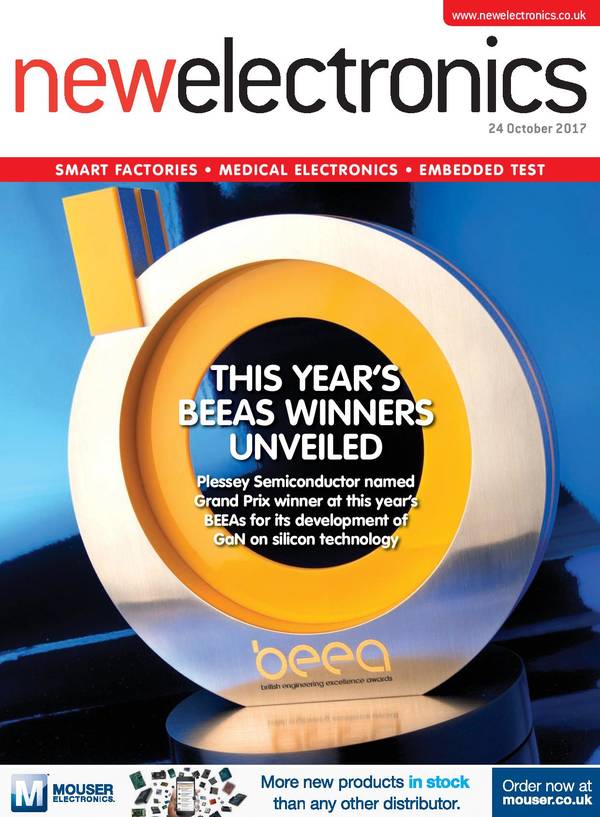
newelectronics de 24 Outubro 2017
"New Electronics is a fortnightly magazine focusing on technological innovation, news and the latest developments in the electronics sector. Downloadable as a digital page turner or pdf file, or offered as a hard copy, the New Electronics magazine is available in a format to suit you. " [...]
Projetos Maker
Diversos Projetos interessantes.
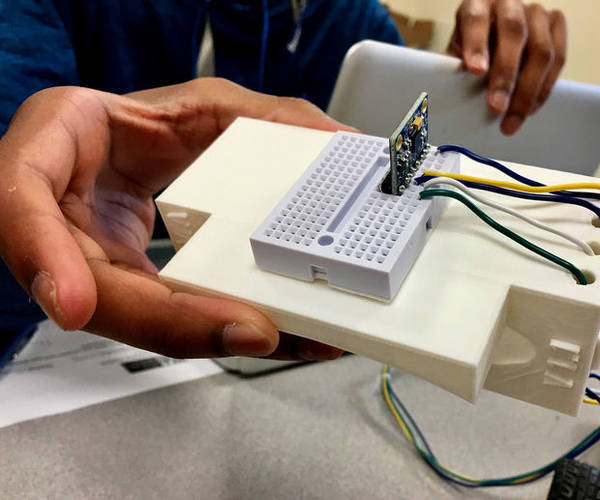
WAV3BOT
"WAV3BOT is an inexpensive open source robot that uses an accelerometer based control system. WAV3BOT is a simple Arduino-bot built with a L298N motor driver and MPU-6050 accelerometer – the body of the ‘bot is built with not much more than a square of cardboard & hot glue. Breadboards are used to expedite the prototyping process – even on the hand controller! This is about as simple as it gets, and yet there’s still plenty of room to expand upon and further customize your own WAV3BOT! " [...]
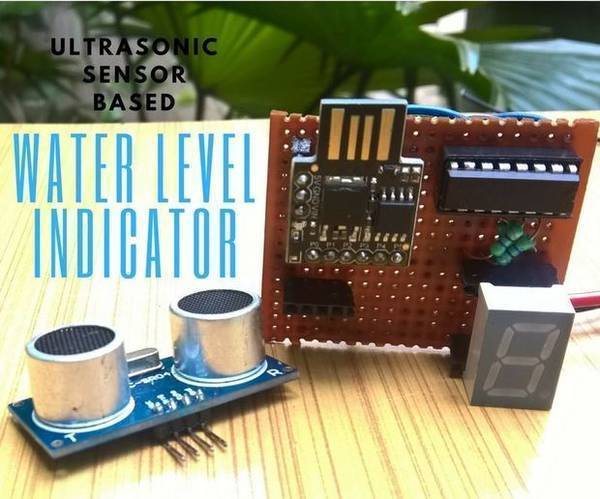
Ultrasonic Sensor Based Water Level Indicator
"When I started learning electronics, a water level indicator was the first project I made using some transistors, leds and a copper wire completely dipped in the water tank. But due to obvious reasons, it got rusted. Then I made the same project with aluminium wire, and again same thing happened. So I forgot about this project as there was no way I could get a stainless steel wire near me. But recently, an idea came to my mind, of using ultrasonic sensor for the same project of using an ultrasonic sensor for the same project. So, in this instructable I'll show you how you can make a water level indicator using an ultrasonic sensor." [...]
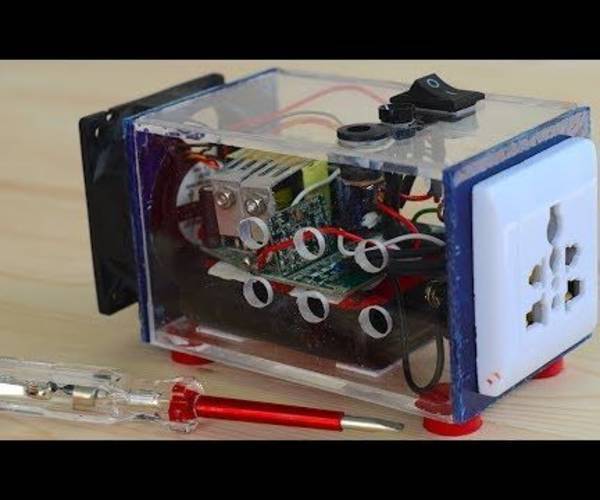
DIY Portable Power Inverter (12v DC to 220v AC)
"In this instructable I am going to built a portable power inverter that converts 12v DC TO 220v AC. This is probably the smallest portable homemade inverter you will find here. The goal is to built this inverter to fulfil the need of having a line voltage on your work bench that is far away from any power outlet. This power inverter is able to deliver 70 watts of continuous power which is good enough for small appliances such as a hot glue gun or a soldering iron. " [...]
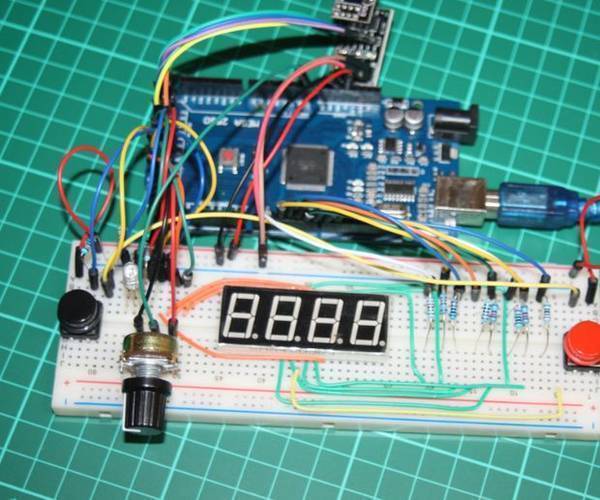
Arduino Wireless Combination Lock With NRF24L01 and 4 Digit 7 Segment Display
"This project started its life as an exercise to do something with a 4 digit 7 segment display. What I came up with was the ability to enter 4 digit a combination number, but once it was finished, it was quite boring. I built it using an Arduino UNO. It worked, but did nothing else. I then had the idea that it should have a button to accept the selected number, and maybe another button to change the combination, and maybe an LED to show the state it was in at any time. Whilst it sounded like a plan, it also meant that I would run out of pins on the UNO." [...]

Geo-location Using Only ESP8266 | Without GPS Module
"Its possible to get location with just our tiny little ESP8266 board and nothing else. Curious after reading the title? Yes it’s possible to get location with just our tiny little ESP8266 board. We don’t need anything other then ESP board, not even GPS module to get our live coordinates. Yes, but we do require one screen to display the coordinates. So how this is possible?" [...]
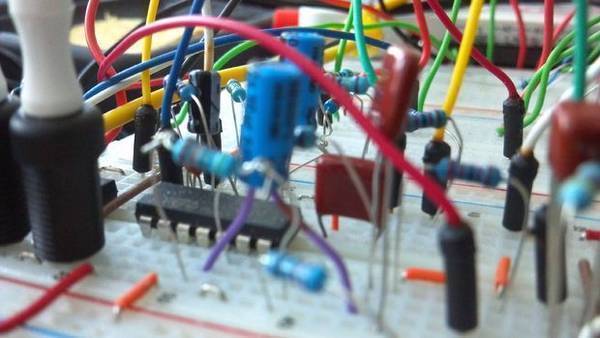
DIY EEG (and ECG) Circuit
"EEGs are a noninvasive way to look into your brain. While the brain is extremely complex, areas of it can lock into circular firing patterns, resulting in telltale brain waves that one can observe with the right equipment. Intensity of these waves change depending on your internal state. The waves we will be most easily able to distinguish are alpha and beta waves -- alpha waves occur at around 8-12 Hz and when measured from the frontal lobe provide an estimate of how relaxed a person is, while beta waves are around 12-30 Hz and correspond to how much a person is concentrating or how alert they are. The concentration of each wave can also tell more specific things about your thought patterns depending on where you measure them from. For example, alpha concentrations on the left motor cortex increase when you think about moving your right hand." [...]
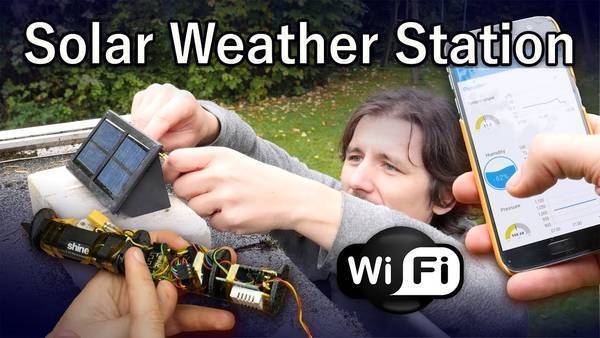
Solar Powered Weather Station
"The code and 3D models can be downloaded from github: WeatherStation The code is Arduino based. There are two projects. One for the actual solar weather station which will be outside and one for a small battery powered humidity sensor for the bathroom (which will be ignored here). The Arduino IDE has to have the ESP8266 board support installed. For the two projects the following libraries are needed: - DHT sensor library by Adafruit - Adafruit BMP086 library - Adafruit MQTT library As hardware WeMos D1 mini microcontroller is used with some shields and one photoresistor. To enable wake-up for the deep sleep pin D0 and RST are connected." [...]
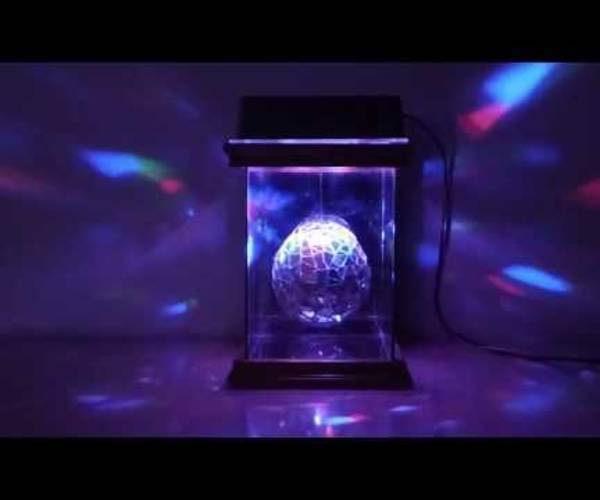
Mosaic Glitter Ball With Color LEDs
"This is a nice glitter ball made by my wife Mieke. The ball is made of styrofoam and is covered with pieces of mirror glass, that are cut to size and glued onto the surface of the styrofoam ball.I designed the electronics to make the ball rotate very slow and to control the LEDs.I used red, green and blue 10mm high brightness LEDs that are lined up so the whole top of the glitter ball is illuminated by the LEDs. The individual LEDs have a lens built, so the light is focussed into a cone-shape. Over short distances, they give a strong reflection on the pieces of mirror glass on the glitter ball. The red, green and blue LED's are controlled by a Microchip PIC12F683 microcontroller.To make the ball rotate very slowly i used a 3V mini brushed DC motor, but i control the motor in an unusual way to get the required slow and smooth rotation : i use a digital output of the Microchip PIC12F683 to give a short burst of pulses to the DC motor about every 1,8 seconds. This short burst of pulses makes the motor step forward with a small step every 1.8 seconds.The ball is hung up from the motor using a piece of thin fishing line." [...]
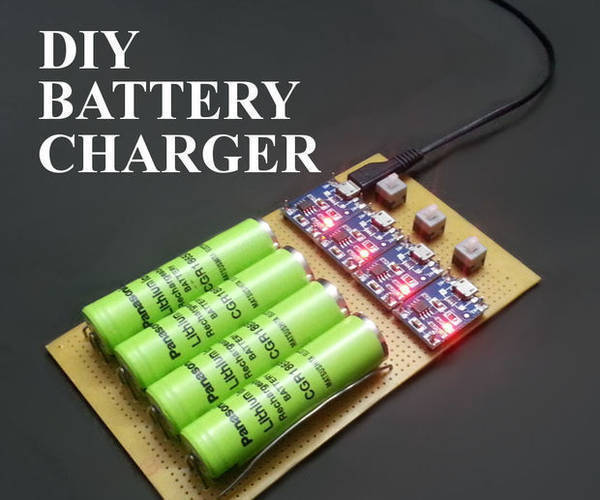
How to Make Battery Charger at Home
"Li-Ion batteries (18650 cells) are very widely used in all the electronics gadgets that we use today like mobile phones, laptop, powerbanks, etc. These batteries provide good backup and are a reliable source of power, therefore are also very convenient to use in DIY projects. However, charging these batteries is still hassle as the commercial chargers are quite expensive. Also, a good quality charger is essential for Li-Ion batteries, otherwise the battery life will get degraded soon. A balanced charger does the job well but it is available in higher price range. So, in this instructable i decided to make a Li-Ion battery charger that can simultaneously charge four 18650 cells together." [...]
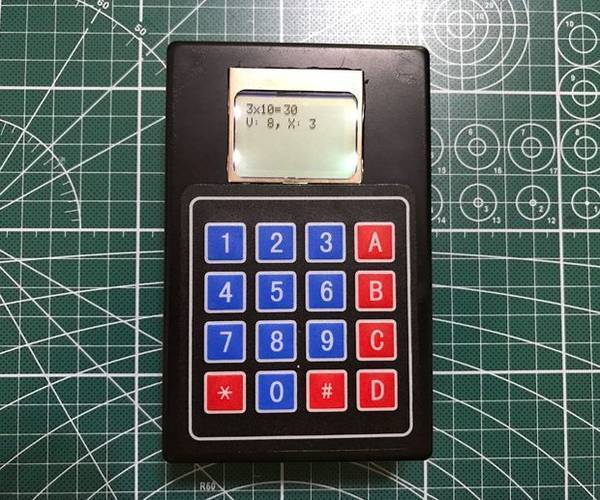
Math Learning for Kids With ESP8266
"This project is a progress of my previous prototype made with Arduino Nano. This time I wanted it to be an IoT device with a proper case, a battery and a decent look. That's why I replaced the OLED display with a Nokia 5110 LCD which has a metal bezel. " [...]
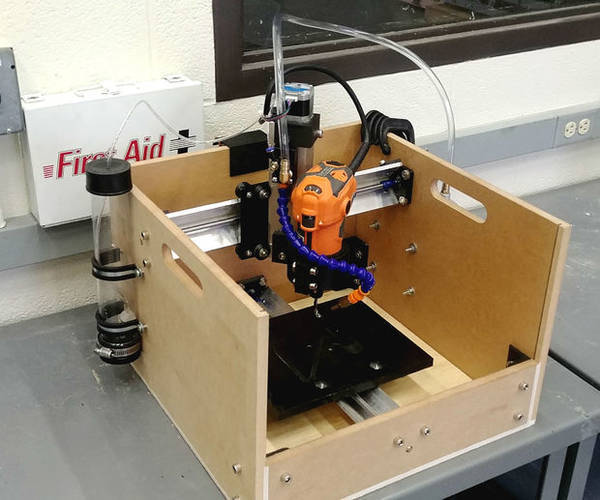
Sienci Mill One Air/Oil Mist Coolant System
"Intro:This idea stems from attempts at cutting aluminum at more aggressive rates which often led to melted aluminum on an overheated bit. This coolant system allows for both increased feed/cut depths and prolonged cutting tool life. The design aimed to keep the mill portable by mounting all components to the mill itself and using an air pump instead of depending on an air compressor (with the pump running significantly quieter). Designed for the Sienci Mill One, it could easily be adapted for most compact CNC mills. The design doesn't require any special skills beyond what would be needed to assemble the mill to begin with, and the ability to drill. Minus the pump and nozzle/regulator block, most of the materials used can be found at any local hardware store." [...]
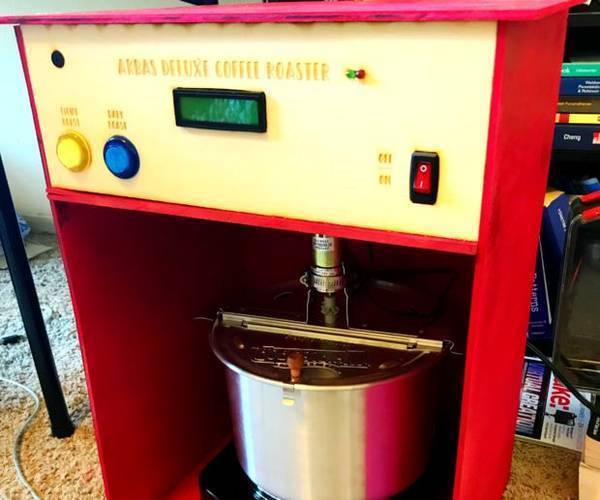
Semi-automated Coffee Roaster
"My husband and I already grind and brew our own coffee at home. Now we want to roast it. I also want to learn how to use an Arduino. I put these two things together to create a Semi-Automated Coffee Roaster. For this project, I will set up a hot plate and whirley popper to roast my coffee beans, and program the Arduino to tell the motor when to stir the beans and for how long, light LED's to indicate bean roasting or readiness, a buzzer to let me know the roasting is complete, and an LCD to give instructions and count down the time. This seemed like a lot for someone new to electronics, but I had expert guidance and managed to pull it off." [...]

DIY-Simple Water Level Indicator With Water Flow Signal for Just 50rs/1$
"How to make a water level indicator to save water from overflowing with Motor Dry run prevention. A water level indicator is used to show the level of water in an over head tank. This keeps the user informed about the water level at all times and avoids the situation of water running out when it is most needed. There are many videos on youtube But this one is unique because this water level indicator circuit also has an water flow signal. It not only indicates the amount of water present in the overhead tank but also gives the water inlet signal so that dry run can be prevented. " [...]
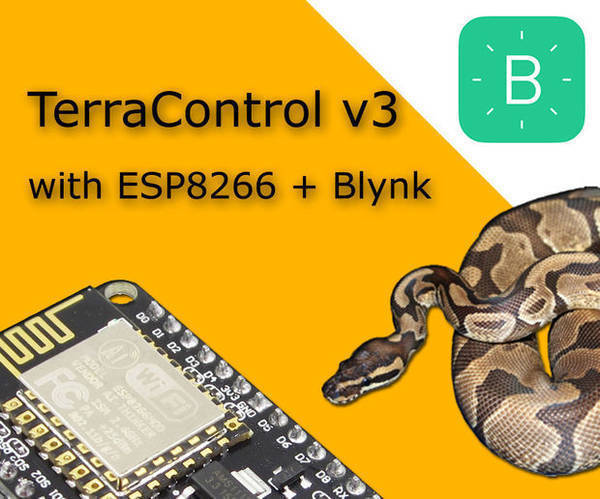
TerraControl V3.0 - ESP8266 + BLYNK
"Hey guys, after few months of playing with ESP8266 I finally got new version of TerraControl I'm satisfied with and willing to share with you. Some of you might notice I'm skipping version 2.0...that's because that version was using mostly the old code with few additions but it was still messy as hell. Thanks to Blynk I was able to cut over 600 rows of code to 100 rows of much simple code! What's changed? Little adjustments is the physical connections. Mainly because of the DHT sensor which could not be connected while booting up in the old version." [...]

Homie BME280 - The Sensor
"The Homie BME280 project is a small and easy to integrate temperature, air pressure and humidity monitoring solution including OLED display. The mqtt-bme280-homie project is a small and easy to integrate temperature, air pressure and humidity monitoring solution with an extra SSD1306 OLED display. Sensor data is send via MQTT and displayed on the small screen. Local time is loaded via NTP. The project is built with a cost-effective ESP8266 WiFi chip (I used a NodeMCU from ebay, Wemos D1 mini will do as well). The software is based on Homie to enable an easy integration with home automation systems like OpenHab." [...]
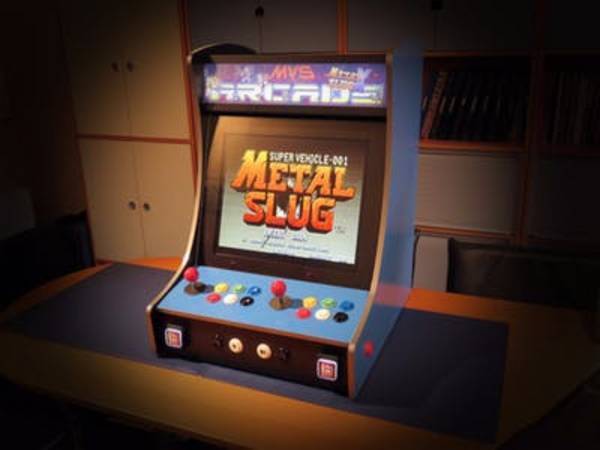
Raspberry Pi Bartop Arcade Cabinet
"A home-built bartop arcade cabinet powered by a Raspberry 2B running RetroPie. Here is a project I did a while ago: after seeing some videos and reading some articles about people using a Raspberry Pi to play retro games, I decided to build my own custom fullsize bartop arcade cabinet. I did some research and decided I would need a Raspberry PI 2B, an I-PAC 2 interface, to connect the joysticks and buttons, and RetroPie software as the main parts to make it work. " [...]

How to Control Any Arduino Projects Using Voice Recognition
"This Arduino project utilizes a speech recognition app developed by the author to control any appliances in your house using your voice. In this example, the app turns On and OFF a couple of leds using your voice. To turn on the RED light, just say "ON". To turn on the blue light, say "BLUE". To turn off the leds, say "OFF". To blink the red led, say "BLINK"." [...]

Celtic Dragon Mosaic With Sound Activated LED-eye
"This is a another cool mosaic work made by my wife Mieke inspired by drawings of celtic dragons.I designed the electronics for the sound activated "breathing" red LED, that forms the ominous eye of the dragon.So this project is not for the faint-hearted. ;-) The "breathing" LED is sound activated using a miniature electret microphone and will "breathe" as long as sound is detected. Once it is quiet, the dragon goes to sleep and the eye extinguishes.But when sound is detected again, the dragon wakes up again and the red eye will start "breathing" again. " [...]
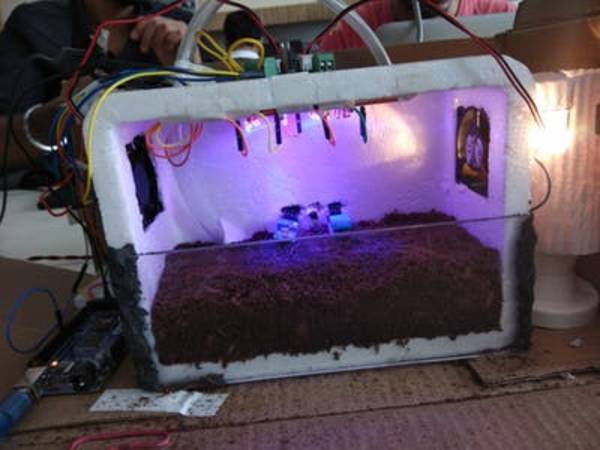
Hydroponics
"Automatic plant growth model. Hydroponics is a type of soil less agriculture. Soil looses its nutrients and fertility with time, so to avoid that we can use Hydroponics. Plant growth and nourishment can be improved and control too. Plant which can grow only during a specific time of the year and be grown throughout the year. We can also monitor the growth of the plant, nutrient level of the soil, moisture contained in the soil and the amount of light received." [...]
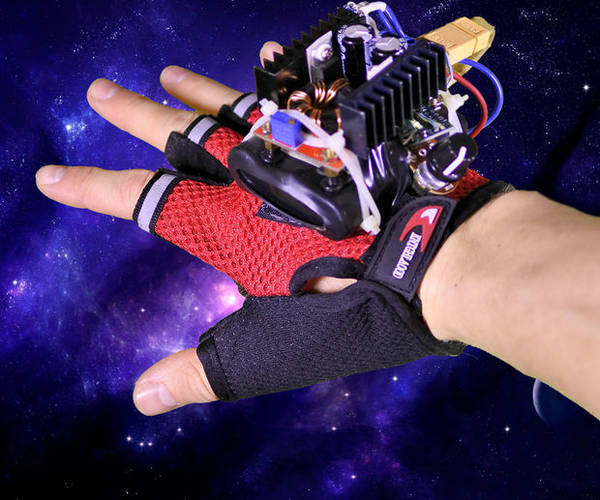
DIY Time Control Machine
"This project is about how to make a time machine! This machine looks like a glove, and can "stop" any moving subject. At first, watch a video with some demonstration and experiments, guess how it works, and then read about how to make it =) This effect looks like better in real life (by naked eye, not through a camera), without black lines. Smooth perfect time stop effectc!! IT IS REAL "OH MY GOD" REACTION! " [...]

Critter: 3D Printed Crawling Arduino Robot
"The Critter is a 3D printed Arduino controlled crawling robotics kit. It was created by Slant Concepts as part of the LittleBots Robotics Kits project. The Critter robotics kit is designed to be controlled from an Android bluetooth app that can work on phones or tablets. The app allows you to "drive" the Critter and control functions such as Dance and Autonomous Mode. The Critter was created in order to introduce robotics beginners to the most basic components of walking robots and how they work. Since the Critter is a crawling robot there are few complexities and pitfalls when compared to other walking robots." [...]
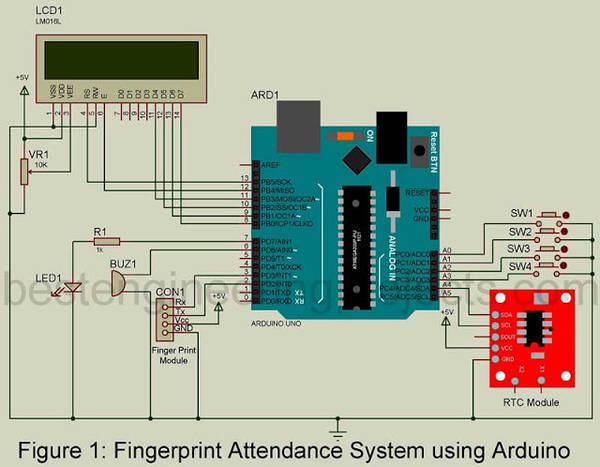
Learn How To Make Your Own Fingerprint Attendance System using Arduino Uno
"Hello Electronics Lovers today I bring something new for you guys, A basic Fingerprint Attendance System utilizing Arduino and can be extremely helpful for those places where participation is taken for keeping up enlist like office, school and so forth. Already, we had posted RFID based participation framework, Arduino Fingerprint Sensor Lock and so on. The working function of this project is simple you will use thumb impression for adding new users to your database. The Fingerprint Attendance System utilizing Arduino depends on a basic calculation called coordinating calculation and contrast and beforehand put away templets of unique mark against client's unique mark for verification. Keeping up an enlist for participation is ordinarily utilized for customary participation framework, however, it is considerably more dull. In this participation framework, the client puts a finger on the sensor, the participation is taken and a message is shown in LCD alongside individual name." [...]
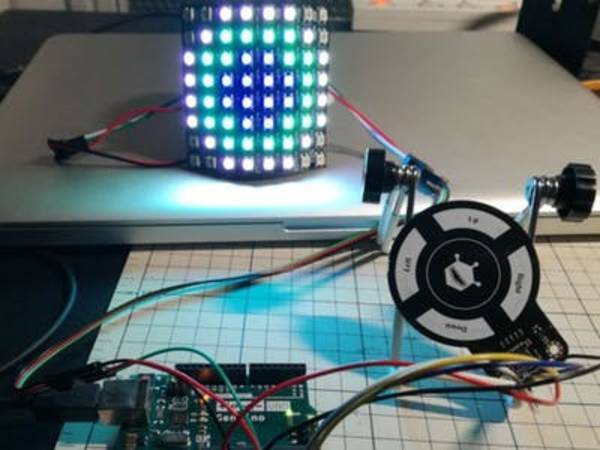
LED Controlled by 3D Gesture Sensor
"I tried controlling the display of flexible LED matrix with 3D gesture sensor. " [...]
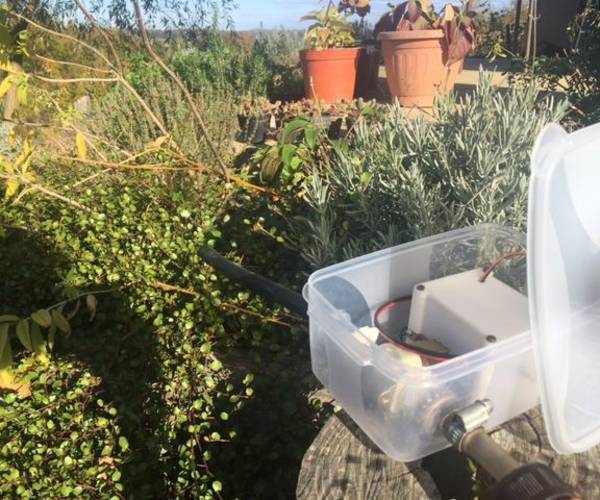
Watering System
"In this instructables I will show you how to make fully automated watering system. It only takes a few hours to make. For mine i used a little more than 10 hours and it was completed and worked properly. Entire project is very cheap to make, many components you might even have laying around the house, for mine watering system I used around 10$. " [...]
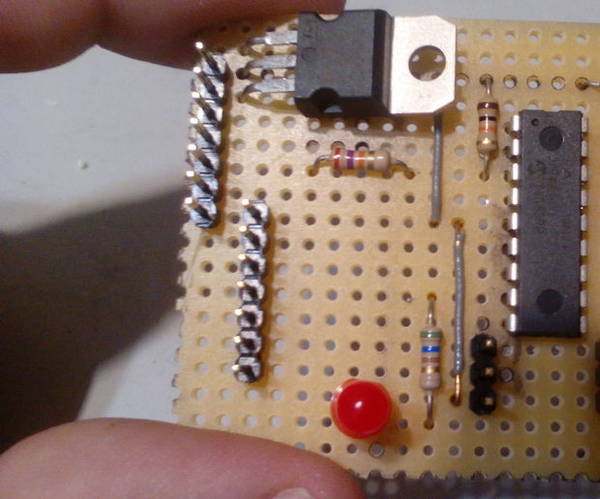
Cheap And Easy Picaxe Robot Board With Serial Cable
"Here are the instructions on how to build an easy, simple and cheap PICAXE BOARD to control a SUMO ROBOT or to use on any number of other PICAXE 18M2+ projects ! " [...]
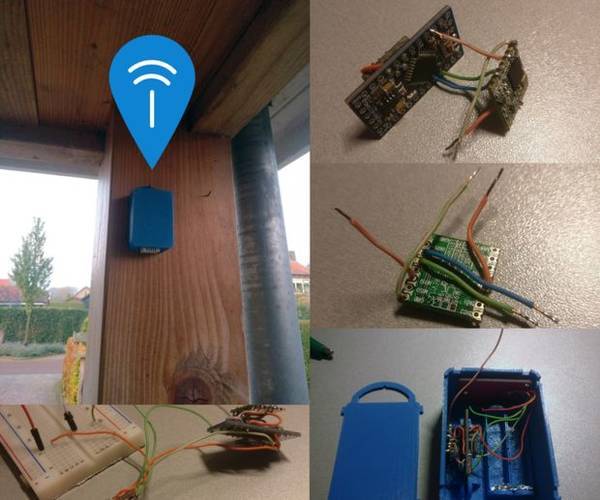
Internet of Things: LoRa Weather Station
"This is an example of a nice LoRa project. The weather station contains a temperature sensor, air pressure sensor and humidity sensor. The data is read out and sent to Cayenne Mydevices and Weather Underground using LoRa and The Things Network. Check if there is LoRa Gateway of the The Things Network in your area! " [...]
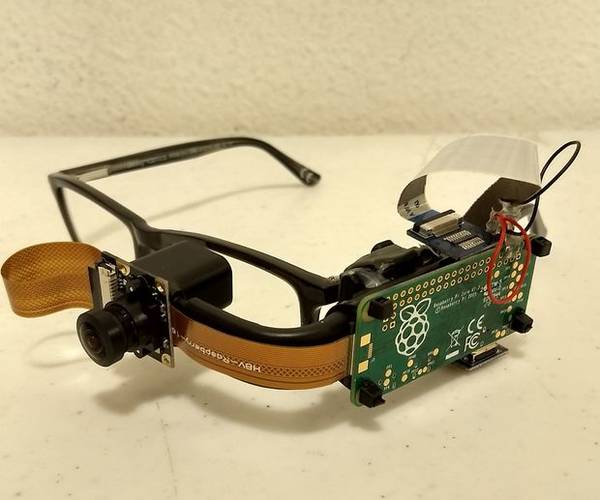
Poor Man's Google Glass/Aid for Those With Tunnel Vision
"Hello, this is my first instructable, so feedback is greatly appreciated. Abstract: This project streams live video from a fish-eye camera onto a wearable heads-up display. The result is a wider field of view within a smaller area (the display is comparable to a 4" screen 12" away from your eye and outputs at 720p). The primary purpose is to provide more spacial awareness to those with Retinitis Pigmentosa (abbreviated as RP), a degenerative eye disease that results in tunnel vision (it is comparable to looking through a toilet paper roll all the time). That being said, because the project is based off an RPi, there is a huge range of possible applications (some of which will be discussed at the end). Materials List: (1) Raspberry Pi Zero ($5) (Raspberry Pi Zero W also works) (1) Micro SD Card for Raspberry Pi($8) (just a regular Micro SD card, nothing special." [...]
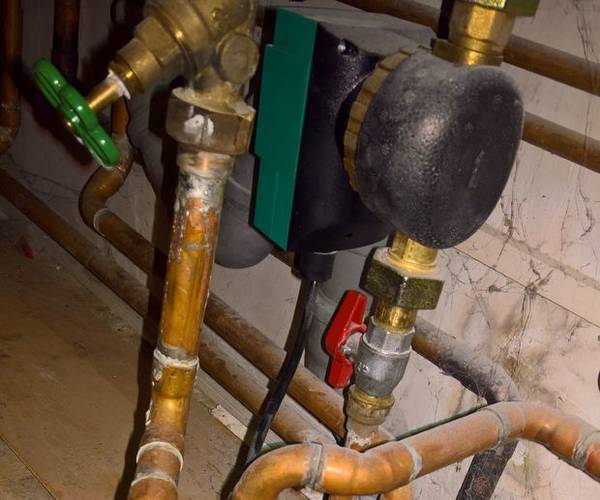
ESP 8266 Controlling Hot Water Circulation Pump
"Task: Control a hot water circulation pump. The hot water circulation pump used to work all the time. To save some energy at home it was necessary to control the pump cycles. The ESP8266 is an ideal platform to realize this kind of project. One of the IO ports is connected to a temperature sensor and another port is connected to a solid state relay. The control software offers an web interface to enter the temperature set points and the pump operation time/day." [...]
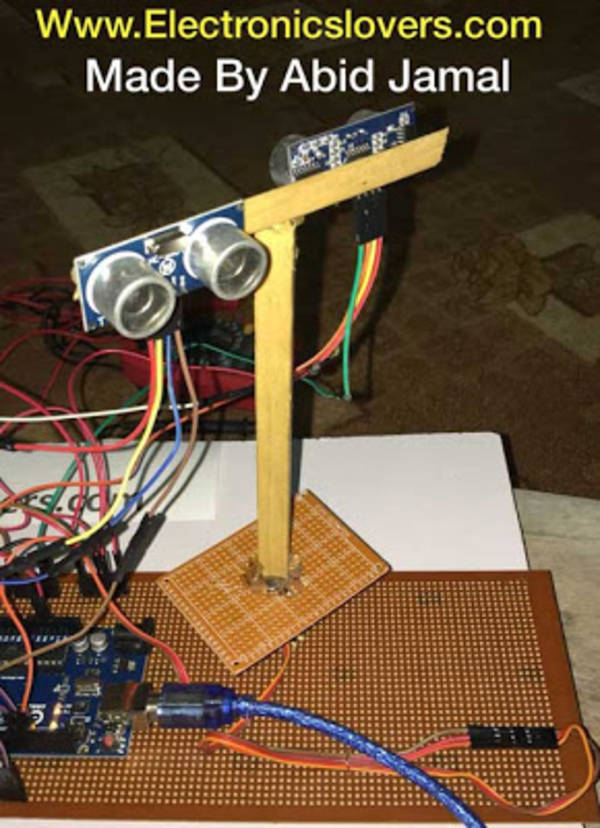
Made a Radar Station by Using Arduino
"Hi hello Electronics Lovers, today I bring something new and interesting for you guys. In this tutorial, I will show you how to make a mini Radar Station by Using Arduino ide and development software tool for coding known as Processing. This is a "do it yourself project" I have explained everything in a clear and easy way. "The theme of this project is to detect objects in space or ground for surveillance purposes. Whenever an object is detected by ultrasonic sensors, it will make an alert sound and will display distance and angle of the targeted object right on your Computer screen." Novelty in this project: Used two Ultrasonic Sensors at the same time to cover the whole area (360 Degrees)." [...]

Self-sufficient Dome
"This Instructable is for the proces of building my self-sufficient greenhouse dome, ment to inspire and encourage others to build one of their own. Im a 25 years old industrial design student living in Denm#ark and in the spring of 2017 I felt like taking a break from a busy city life and getting my hands dirty. Therefor I decided to build a small greenhouse and try growing my own crops, it didn't take long before this idea escalated and i spend half a year carrying out the project in my spear-time while being in a half year long internship. Instead of making the steps in this Instructable in the order that I carried them out, I tried dividing it in to steps of the different elements the project contains. I hope you will enjoy my Instructable and feel free to ask me any questions you may have! " [...]

Voice over WI-FI with ESP8266
"I was reading about this NSA hack where they use a Samsung Smart TV to record audio data in order to potentially spy on its users: https://wikileaks.org/ciav7p1/cms/page_12353643.html I wondered on what would it take to build a similar spy microphone that could send audio over WI-FI, be cheap and small enough to hide it. What I came up is a system that uses one ESP8266(NODEMCU) board, one PIC18F25K22 micrcontroller and one MCP6024 amplifier in order to prove that this is possible. The system is pretty cheap but not very small. I built this system on a breadboard and as expected, is bulky. For a proof of concept I thinks it’s good enough. It could be made smaller by using only the ESP8266 chip instead of all the NODEMCU board, and by replacing the PIC and audio amplifier with smaller chips, maybe their SMD versions, or other smaller chips with the same capabilities." [...]
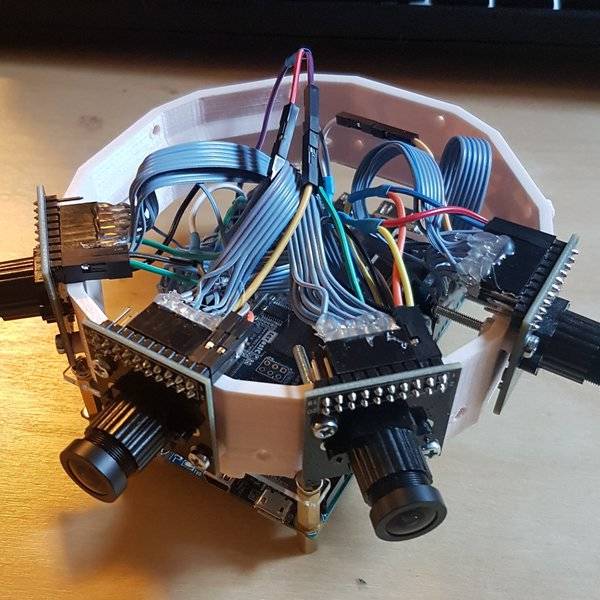
VR Camera: FPGA Stereoscopic 3D 360 Camera
"Building a camera for 360-degree, stereoscopic 3D photos and videos. 360 photos are pretty cool, especially if you have the opportunity to view them in VR. However, stereoscopic 3D is what really brings the VR experience to life. The cheapest commerically available 360 3D camera is $800, and I'm attempting to build a camera for half that price or less. I'm using a Terasic DE10-Nano FPGA development board with a Cyclone V SoC onboard for stitching and data storage, and Omnivision OV5642 camera modules as the image input. " [...]

Control your Computer with Hand Gestures using Arduino
"Recently Gesture controlled Laptops or computers are getting very famous. This technique is called Leap motion which enables us to control certain functions on our computer/Laptop by simply waving our hand in front of it. It is very cool and fun to do it, but these laptops are really priced very high. So in this project let us try building our own Gesture control Laptop/Computer by combining the Power of Arduino and Python. We will use two Ultrasonic sensors to determine the position of our hand and control a media player (VLC) based on the position. I have used this for demonstration, but once you have understood the project, you can do anything by just changing few lines of code and control your favorite application in your favorite way." [...]
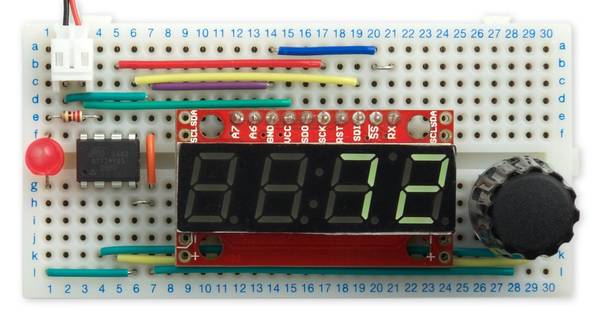
Bounce-Free Rotary Encoder
"This article describes a simple routine to interface a rotary encoder to a microprocessor; I've chosen the ATtiny85 because it's the simplest processor you could use for such an application. The main routine that does all the work is just 11 lines of C, but I've also written a demonstration program that displays the encoder value on a serial 7-segment display, and the direction of rotation on an LED. Introduction Rotary encoders let you control an analogue value by rotating a knob. They generate a series of digital pulses reflecting the distance you've turned the knob, and you can also determine the direction it has been turned. " [...]
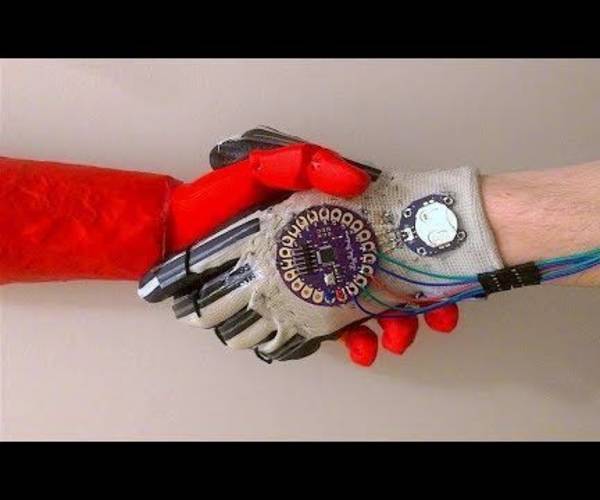
Flex Sensor Glove
"This is a fun project that can be adapted to control anything from robotic arms to virtual reality interfaces. " [...]
That's all Folks!


